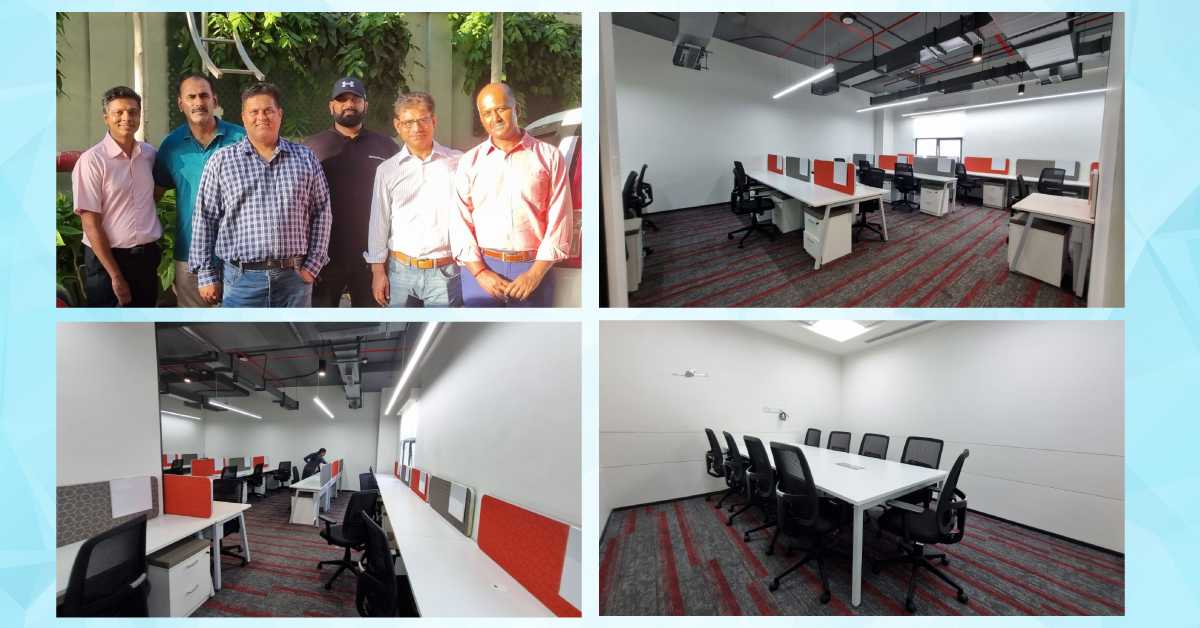Office space
Flexible Office Spaces: What Are They and Why Are They Popular in Indian Metros
Shyam Sundar Nagarajan / Reading Time: 6 mins
Flexible Office Spaces: What Are They and Why Are They Popular in Indian Metros
By Shyam Sundar Nagarajan 6 Mins Read
Flexible office spaces—such as coworking zones and managed offices—offer plug-and-play infrastructure, scalability, and dynamic work environments. In Indian metros, rising demand from startups, GCCs, and SMEs is driving rapid adoption. This guide explains what flexible offices include, why they’re booming, and how to assess them for your business needs.
Key chapter:
What Are Flexible Office Spaces in India?
Flexible office spaces refer to fully furnished, serviced, and scalable work environments—ranging from hot desks and private cabins to managed office space—with short leases, shared infrastructure, and scalable membership models. They cater to the evolving workspace needs of freelancers, startups, enterprises, and multinational captives.
According to Avendus Capital, India’s flexible workspace sector is estimated at USD 3.5 billion in 2024 and projected to reach USD 9 billion by 2028, spanning 126 million sq ft at a 15% CAGR and this is also reported by India Briefing. It is evident that the demand for flexible managed space is only going to increase with more corporates choosing managed office space in the commercial real estate market over the conventional office.

Growth Drivers Behind Flexible Workspace
Hybrid Work & Cost Efficiency
Flexible offices help enterprises reduce real estate costs by 25–30% per desk compared to traditional long-term leases, while offering plug-and-play setups ideal for hybrid workforce models, according to Mordor Intelligence.
In FY 2023, enterprise leasing of flex seats in the office market jumped from 92,400 to 139,000 in major Indian cities—highlighting demand from corporations such as Microsoft and EY, according to The Economic Times and The Flex Insights.
Enterprise and GCC Adoption
Flexible office spaces now account for 19.8% of India’s annual leasing activity—almost one-fifth of the market, up to 15 million sq ft leased in 2024.
Tech-led segmentation dominates, with over 50% occupancy by IT/GCC firms, as reported by The Economic Times. JLL-Qdesq data shows flex seats in metros are driven primarily by SMEs, startups, and consulting firms.
Growth Beyond Tier-1 Cities
Tier-II and III cities—like Kochi, Indore, Lucknow, and Ahmedabad—are seeing rapid adoption of flexible workspaces. These cities are emerging as alternatives to metros due to affordability, local talent availability, and strategic decentralization by enterprises.
Why Indian Metros Favor Flex Spaces
Plug-and-Play Infrastructure in Managed Offices
In metros like Bengaluru, Delhi NCR, Hyderabad, Pune, and Chennai, flex providers offer fully operational offices—furnished desks, IT setups, reception, meeting rooms, and common amenities—all ready from Day 1.
In Bengaluru, leading chains like Incuspaze have leased over 3 lakh sq ft to set up 5,000+ seats, and in Chennai opened 2.5 lakh sq ft with 4,000 seats in 2025 alone.
Scalability for SMBs and Startups
According to Mordor Intelligence, approximately 54% of the 2024 flex space market was occupied by enterprise clients, while startups and SMEs (accounting for 46%) are expected to grow at a CAGR of ~15.9% through 2030 (source: Mordor Intelligence).
Market Penetration & Supply Trends
India’s flex office footprint is predicted to grow from 80 million sq ft in 2024 to 125 million sq ft by March 2027—the major metros leading the expansion (source: The Economic Times).
In Pune alone, GCC activity in Q2 2025 drove 30 lakh sq ft of new leases, half from flex operators like Mindspace and local providers.
Need help with choosing the right space?

Ajay
Space Consultant
Ajay has helped 200+ companies find their ideal office spaces.





City-by-City Flex Space Snapshot
Bengaluru
Commands ~25–30% of India’s leasing activity and leads with 24.8% of the flex office market share in 2024.
Driven by tech adoption—GCCs, startups, and software firms.
Delhi NCR & Pune
Delhi NCR leads flex uptake at ~42% share.
Pune closely behind with massive GCC adoption expanding flexible footprint across Mundhwa, Balewadi, and Kharadi.
Chennai & Hyderabad
Flex supply in Chennai (~75/sq ft rents) is catching up, especially in Knight Frank’s tech & managed office projects like TIDEL Park Pattabiram.
Hyderabad and Delhi NCR collectively comprise half of India’s new office supply projected till 2026.
Emerging Tier-II Activity
Metros like Kolkata, Kochi, Lucknow, and Ahmedabad scale rapidly—flex seats accessible at ~50–70/sq ft per month, half of metro rates, fueling decentralization strategies by large enterprises.
Benefits to Businesses and Workers
Cost, Speed & Flexibility
Instant occupancy—spaces ready in days, not months
Short-term commitments, easy scale-up or exit
Lower leasing risk and no capex headache
Infrastructure & Amenities
Equal access to meeting rooms, printing, mail services
Wellness offerings like gyms, wellness rooms, and social events (evident in Bangalore hubs) boosting retention and productivity.
Community & Network Effects
Close interaction with peers from diverse sectors fosters collaboration
Events, workshops, and networking opportunities help enterprises upskill in Agile, hybrid, and project-based modes.
How GoFloaters Pioneered a Customized Workspace Solution for Exavalu’s Growth in Chennai
Read HereFlexible vs. Traditional Office: At-a-Glance Comparison
Attribute | Flexible Office | Traditional Leased Office |
Lease Term | 1–12 months flexible | Typically 3–5 years |
Fit-out & Set-up | Provided by operator, ready day 1 | Requires months of interior work |
Cost per Seat | Competitive—₹75–95/sq ft in metros | Often ₹100–150/sq ft + CAPEX |
Scalability | High—add or reduce within weeks | Low; slow and costly |
Location Options | Multiple city locations within operator network | One fixed location |
Amenities | Reception, internet, cleaning, events | Basic services unless organized |
Ideal for | SMBs, startups, GCCs, hybrid teams | Large established firms with permanence need |
FAQs
Q1: What’s the difference between coworking and managed office? Coworking typically offers shared desks or open-space models; managed offices provide private cabins/offices within the same flex ecosystem—both under flexible lease terms.
Q2: Can enterprises with >100 seats benefit from flexible spaces? Yes. Flex now accounts for over 54% enterprise use and GCCs increasingly lease 300–500+ seat blocks in metro hubs.
Q3: Are flexible offices available in Tier-II cities? Absolutely. Demand is growing rapidly in cities like Kochi, Ahmedabad, Jaipur, Indore, and Lucknow—offering seat rates 30–50% lower than metros.


